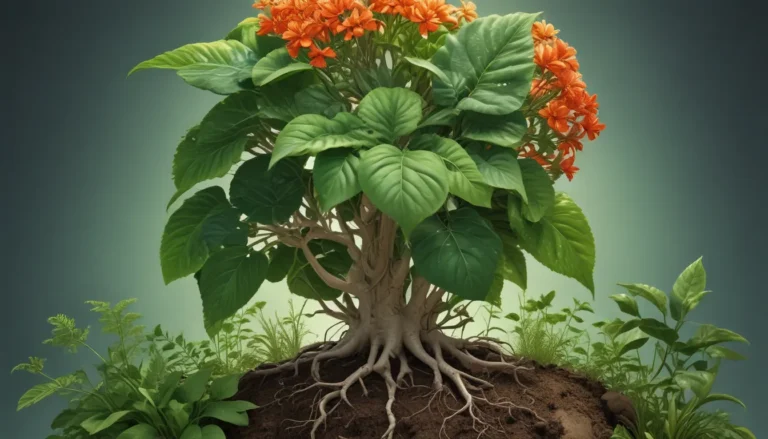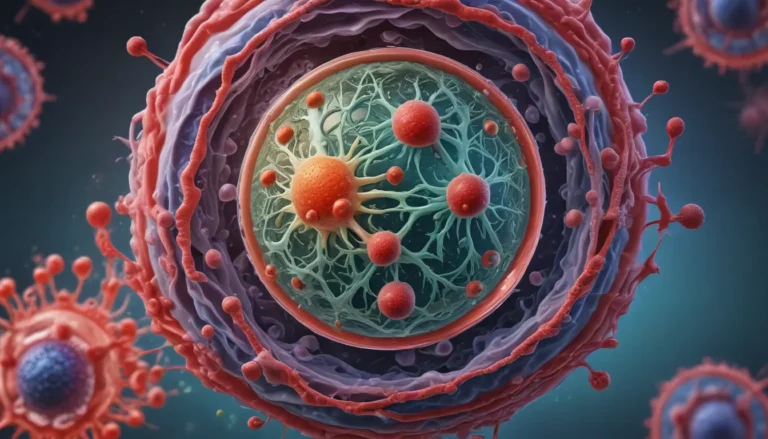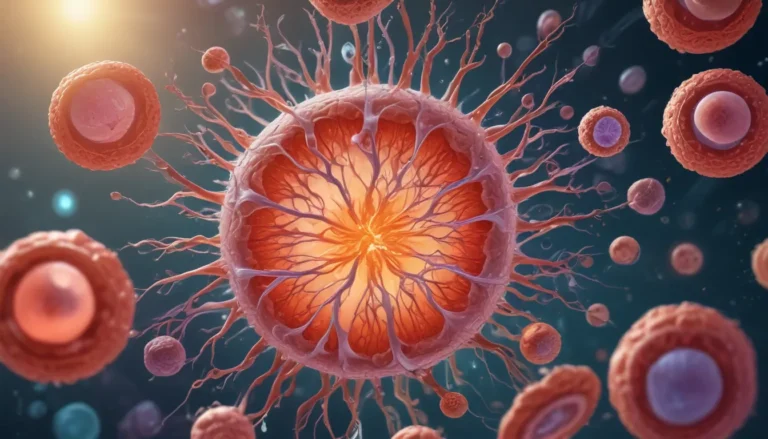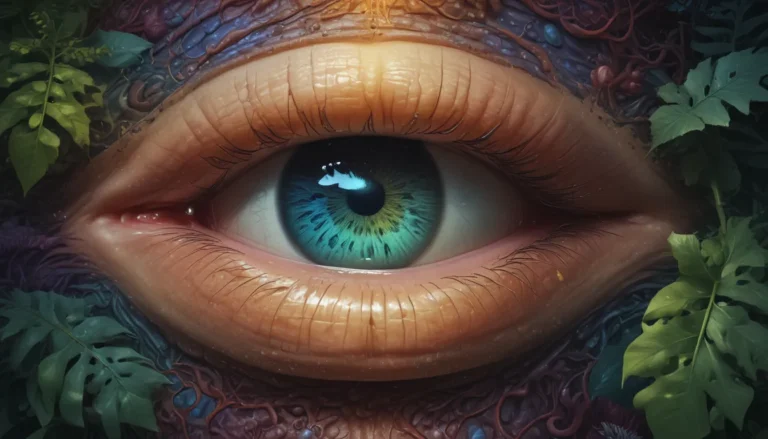A Note About Images: The images used in our articles are for illustration purposes only and may not exactly match the content. They are meant to engage readers, but the text should be relied upon for accurate information.
Welcome to the captivating realm of heterotrophs, where organisms rely on consuming other living beings to fuel their existence. These remarkable creatures play a crucial role in maintaining the delicate balance of nature and are an integral part of the intricate web of life on Earth. From microscopic bacteria to majestic mammals, heterotrophs come in a diverse array of shapes and sizes, each with its own unique adaptations and survival strategies.
In this enlightening article, we will delve deep into the mesmerizing world of heterotrophs and unveil nine astonishing facts that shed light on their fascinating nature. Join us on this educational journey as we explore how heterotrophs procure and process energy, their essential role in ecosystems, and the incredible diversity that thrives within this group of organisms. Prepare to be inspired and amazed as we unravel the wonders of heterotrophs!
Unveiling the World of Heterotrophs
Heterotrophs, also known as consumers, are organisms that obtain their energy by consuming other organisms or organic matter. Unlike autotrophs, which can produce their own food through processes like photosynthesis, heterotrophs depend on external sources of nutrients to meet their energy needs. They play a vital role in the food chain by feeding on plants, animals, or decaying organic matter to sustain their existence.
Exploring the Diversity of Heterotrophs
Heterotrophs can be broadly classified into three main groups based on their feeding habits: herbivores, carnivores, and decomposers. Herbivores primarily feed on plants, while carnivores prey on other animals. Decomposers, such as fungi and bacteria, break down dead organic matter and recycle nutrients back into the ecosystem. This diverse array of feeding strategies contributes to the rich biodiversity of heterotrophs.
The Crucial Role of Heterotrophs in Ecosystems
As consumers in the food chain, heterotrophs occupy different trophic levels and play a crucial role in transferring energy and nutrients through ecosystems. They serve as a link between primary producers (plants and autotrophs) and higher-level consumers, contributing to the balance and stability of natural environments. By recycling nutrients and maintaining population levels, heterotrophs ensure the sustainability of ecosystems.
Humans as Heterotrophs
Surprisingly, humans are classified as heterotrophs, relying on a diverse diet of plants and animals to obtain the energy and nutrients necessary for survival. From fruits and vegetables to meat and dairy products, our food sources are derived from other organisms, highlighting our inherent dependence on heterotrophic resources. By understanding our role as heterotrophs, we gain a deeper appreciation for our interconnectedness with the natural world.
Remarkable Adaptations of Heterotrophs
Over millions of years of evolution, heterotrophs have developed extraordinary adaptations to enhance their feeding efficiency and survival in diverse environments. From specialized teeth in carnivores to intricate digestive systems in scavengers, these adaptations enable heterotrophs to thrive and occupy distinct ecological niches. Their ability to adapt to different habitats showcases the resilience and versatility of heterotrophic organisms.
Symbiotic Relationships in the Heterotrophic World
Heterotrophs often engage in symbiotic relationships with other organisms, benefiting both parties involved. For example, mycorrhizal fungi form mutually beneficial associations with plant roots, aiding in nutrient absorption. Similarly, gut bacteria in many animals contribute to digestion and nutrient absorption processes. These symbiotic interactions demonstrate the interconnectedness and interdependence of organisms in ecosystems.
Contributing to the Nutrient Cycle
Through their feeding habits, heterotrophs facilitate the cycling of nutrients in ecosystems by breaking down complex organic molecules into simpler forms. This process releases essential elements like carbon, nitrogen, and phosphorus back into the environment, ensuring the availability of nutrients for other organisms. By participating in the nutrient cycle, heterotrophs play a vital role in sustaining the health and productivity of ecosystems.
The Diverse Feeding Strategies of Heterotrophs
Heterotrophs have evolved a wide range of feeding strategies to obtain energy from their surroundings. Some species are filter feeders, extracting food particles from water or air, while others are predators that hunt and consume prey. Additionally, scavengers and parasites exhibit unique behaviors to acquire their food sources. The diverse feeding strategies of heterotrophs showcase their adaptability and versatility in acquiring nutrients.
Unraveling the Incredible Diversity of Heterotrophs
From microscopic bacteria to majestic mammals, heterotrophs encompass a vast array of organisms across different kingdoms and phyla. Their unique body structures, feeding mechanisms, and habitats contribute to the rich biodiversity of our planet. This incredible variety of heterotrophic organisms highlights the complexity and beauty of life on Earth, underscoring the importance of preserving and protecting the diversity of species in our ecosystems.
A Glimpse into the World of Heterotrophs: Fascinating Facts and Insights
As we unravel the captivating world of heterotrophs, we discover the remarkable adaptations, diverse feeding strategies, and crucial ecological roles of these extraordinary organisms. By understanding the intricacies of heterotrophs, we gain a deeper appreciation for the interconnectedness of life on our planet and the significance of each organism in sustaining healthy ecosystems. Let us marvel at the wonders of heterotrophs and cherish their invaluable contributions to the web of life.
FAQs: Exploring the Curiosities of Heterotrophs
Q: What is a heterotroph?
A: A heterotroph is an organism that obtains energy and nutrients by consuming other organisms or organic matter.
Q: Are humans heterotrophs?
A: Yes, humans are heterotrophs. We rely on consuming plants and animals for energy and nutrients.
Q: What are the different types of heterotrophs?
A: Heterotrophs encompass herbivores, carnivores, omnivores, and decomposers, each with distinct feeding habits.
Q: How do heterotrophs contribute to ecosystems?
A: Heterotrophs play a crucial role in nutrient cycling, energy transfer, and maintaining population balances in ecosystems.
Q: Can heterotrophs photosynthesize?
A: No, heterotrophs cannot photosynthesize. They rely on consuming other organisms for energy.
Q: Do all animals fall under the category of heterotrophs?
A: Yes, all animals are considered heterotrophs as they obtain energy by consuming other organisms.
Q: What are some examples of symbiotic relationships involving heterotrophs?
A: Mycorrhizal fungi forming associations with plant roots and gut bacteria aiding in digestion are examples of symbiotic relationships among heterotrophs.
Q: How do heterotrophs obtain energy?
A: Heterotrophs break down organic matter through processes like digestion and cellular respiration to obtain energy from their food sources.
Q: Why are heterotrophs essential for ecosystems?
A: Heterotrophs help in recycling nutrients, transferring energy, and maintaining ecological balances within ecosystems.
In conclusion, heterotrophs stand as fascinating organisms that embody the intricacies and wonders of the natural world. From their diverse feeding strategies to their essential role in nutrient cycling, heterotrophs play a vital part in sustaining healthy ecosystems and preserving biodiversity. By delving into the captivating world of heterotrophs, we gain a deeper understanding of our interconnectedness with other organisms and the delicate balance that supports life on Earth. Let us celebrate the enigmatic world of heterotrophs and cherish the remarkable diversity and contributions of these extraordinary creatures in shaping the tapestry of life.






